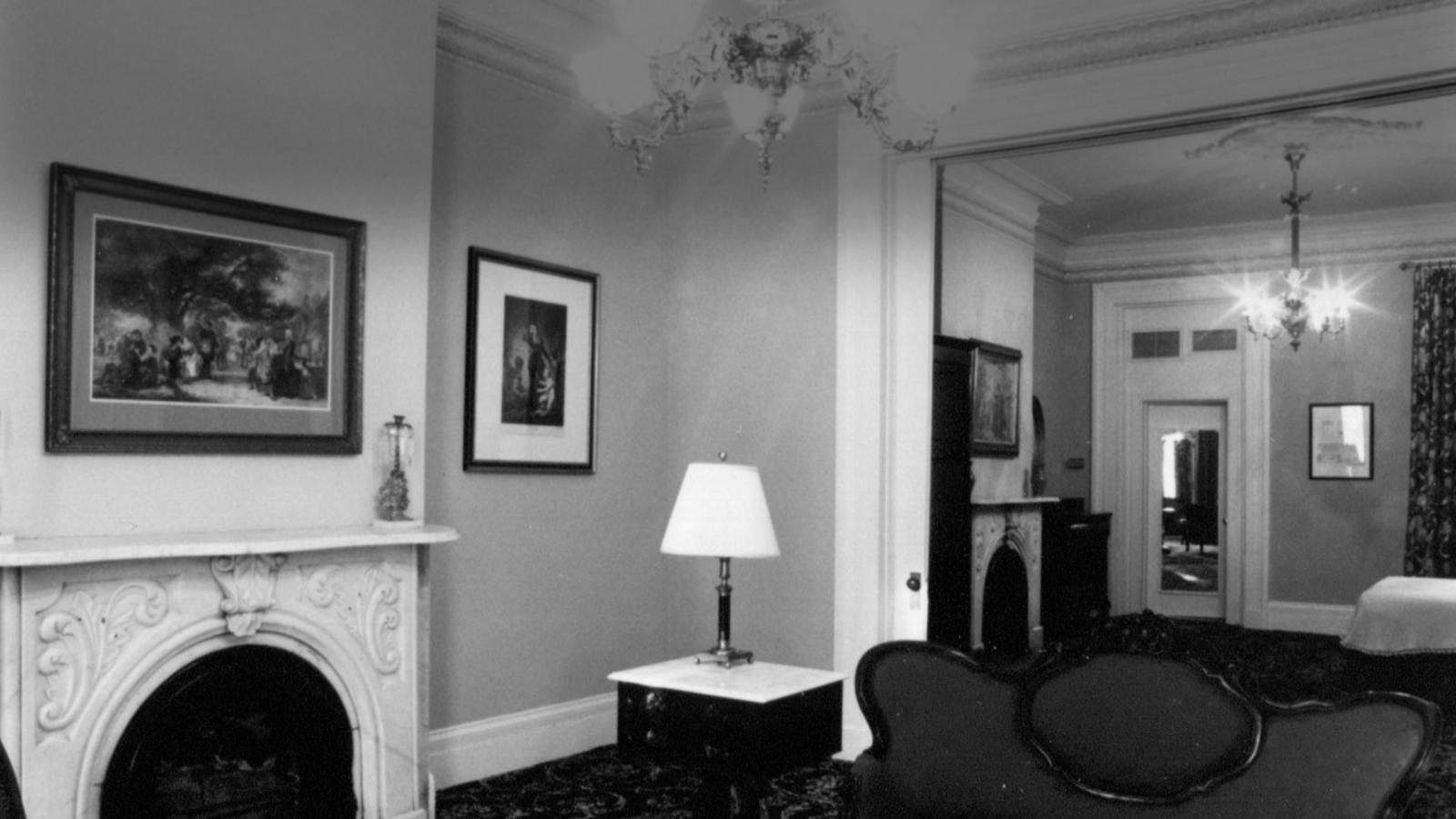Our History
The land on which Linden Row Inn sits was originally part of a 100-acre tract west of the city limits purchased by Thomas Rutherfoord, who amassed his fortunes in tobacco, milling and real estate. When the State decided to build a state penitentiary, the land where the Linden Row stands was considered as a potential site. Rutherfoord offered 12 acres of his land further west along the James River instead, where the penitentiary stood for two centuries.
The four lots between Grace and Franklin Street, and First and Second Streets were given to Rutherfoord’s brother-in-law, Parson Blair. In 1816, the eastern end of the lots was sold to Charles Ellis. Mr. Ellis’ home stood across from these lots at the corner of Second Street. Ellis used the land as a garden which was known for its beautiful roses, jasmine and linden trees.


In 1811, Elizabeth Poe, an actress performing in a traveling company at the Richmond Theater, became ill and died, leaving two young children orphaned. Mr. and Mrs. John Allan raised her son Edgar Poe and gave him Allan for his middle name. Returning from a five-year trip to England, the Allans (including Edgar) lived with Mr. Allan’s business partner, Charles Ellis. It was in the gardens that Edgar Allan Poe played with the Ellis children. Local legend has it that the enchanted garden is the one that Poe mentions in his famous poem “To Helen.” Historians have also noted that young Poe first courted his life-long love, Elmira Royster, in the garden where the Linden Row Inn now stands.
In 1839, the land was purchased by Fleming James, a business partner of Ellis’. Eight years later, James built a row of five houses, which were called Linden Square, named after the linden trees that adorned the Ellis Garden. In 1853, the western end of the block was bought by the sons of Thomas Rutherfoord, Samuel and Alexander, who built five more houses like those James had erected in 1847. These houses are now part of Linden Row Inn.


From 1895-1906, the highly respected school of Miss Virginia Randolph Ellett was located here. Among the early pupils were Irene and Nancy Langhorne. Irene later became famous as Irene Gibson, the “Gibson Girl”, and Nancy became known as Lady Nancy Astor, the first female member of the British Parliament. Miss Ellett’s School for Girls later became affiliated with the Episcopal Church and is known today as St. Catherine’s School for Girls located on Grove Avenue.
In 1922, two of the original buildings were razed in order to make way for the Medical Arts Building, now known as Linden Towers. Mary Wingfield Scott, noted local architectural historian, saved the eight remaining houses from being razed in 1950. She later gave the property to the Historic Richmond Foundation (now known as Historic Richmond) in 1980.


Linden Row was lovingly restored in 1988 as a full-service Inn. The original architecture was meticulously maintained and most of the rooms are furnished with authentic antique pieces from the middle and late 1800’s. Today, the hotel is on the National Register of Historic Places and is managed by an affiliate of Savara Hospitality. The property is regarded as the nation’s best surviving row of Greek revival architecture.
For further information on the history of the Linden Row Inn and its surrounding neighborhood, visit:
- National Park Service
- Historic Richmond
- Valentine Richmond History Center
- Images of America - Linden Row Inn by Ginger Warder
Photographs courtesy of Library of Congress Archives and Valentine Richmond History Center.



